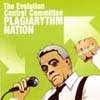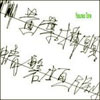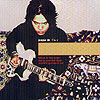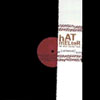- Administrator
- Albums and Singles
 Remember that link of the week with the Oscar Meyer Weiner songanswering machine lady talking? Well, Mark Gunderson, aka The EvolutionControl Committee opens his current full-length masterpiece with thatvery same woman speaking along to the "Star Spangled Banner" as the"Star Spangled Bologna." Only a few years before people like Kid 606and Dsico were marrying Missy Elliott with Joy Division, the ECCcombined two flavors in perhaps one of the most groundbreaking (yetoverlooked) 7" singles of the 1990s, The Whipped Cream Mixes,where Public Enemy raps were matched with the music of Herb Alpbert& the Tijuana Brass. But the ECC aren's just mash-ups and cut-ups,as the Committee (much like Seeland label bosses, Negartivland)provides a healthy amount of gimmicky cheese, twisting and mutatingwords and songs into sounding like what they want to hear. While thisdisc compiles some of the finer moments of the ECC in the last fewyears since, it does also provide some brand new material forunderground superstar potential. "I Want A Cookie" jumps out first as avery aggressive self-help sounding woman gives empowerment advice overhorn-blaring hip 1960s-retro spy chase music. The classic "Rocked ByRape" is also included with Dan Rather's cut up samples over the ECC'sown AC/DC rip off riffs. The rhythmic usage is clever while the outputis absolutely hilarious, with examples like "Dramatic Alien Torture" /"Cancer Death Threat Fleeing for Their Lives" / "Voodoo Bizarre LoveTriangle," it's hard to keep up and impossible to tune out whenplaying. Four years after this song first surfaced, it has not lost itscharm, however it would have been nice to have a new revisit with allof Dan's quotes from the 2000 US Election Night overnight fiasco!(Search for some of those quotes online some time.) There are someother memorable moments like "Sex Re-Education," the cut-up 1950s-erasex education speech from a dad to his son, but at 29 tracks, therereally is a ton of forgettable filler.
Remember that link of the week with the Oscar Meyer Weiner songanswering machine lady talking? Well, Mark Gunderson, aka The EvolutionControl Committee opens his current full-length masterpiece with thatvery same woman speaking along to the "Star Spangled Banner" as the"Star Spangled Bologna." Only a few years before people like Kid 606and Dsico were marrying Missy Elliott with Joy Division, the ECCcombined two flavors in perhaps one of the most groundbreaking (yetoverlooked) 7" singles of the 1990s, The Whipped Cream Mixes,where Public Enemy raps were matched with the music of Herb Alpbert& the Tijuana Brass. But the ECC aren's just mash-ups and cut-ups,as the Committee (much like Seeland label bosses, Negartivland)provides a healthy amount of gimmicky cheese, twisting and mutatingwords and songs into sounding like what they want to hear. While thisdisc compiles some of the finer moments of the ECC in the last fewyears since, it does also provide some brand new material forunderground superstar potential. "I Want A Cookie" jumps out first as avery aggressive self-help sounding woman gives empowerment advice overhorn-blaring hip 1960s-retro spy chase music. The classic "Rocked ByRape" is also included with Dan Rather's cut up samples over the ECC'sown AC/DC rip off riffs. The rhythmic usage is clever while the outputis absolutely hilarious, with examples like "Dramatic Alien Torture" /"Cancer Death Threat Fleeing for Their Lives" / "Voodoo Bizarre LoveTriangle," it's hard to keep up and impossible to tune out whenplaying. Four years after this song first surfaced, it has not lost itscharm, however it would have been nice to have a new revisit with allof Dan's quotes from the 2000 US Election Night overnight fiasco!(Search for some of those quotes online some time.) There are someother memorable moments like "Sex Re-Education," the cut-up 1950s-erasex education speech from a dad to his son, but at 29 tracks, therereally is a ton of forgettable filler.Read More
- Administrator
- Albums and Singles
 With the release of their second full-length album, 2001's Scary World Theory, Lali Puna have not only secured their place as not just another Notwist "side project," but have become one of my favorite groups. It's tough to arrange a schedule when your time is divided amongst a number of other bands, as Marcus Acher (1/2 of the core duo) knows very well. In the time between releases, the group has taken the opportunity to leak out an unsurfaced song and its apparent dub counterpart.
With the release of their second full-length album, 2001's Scary World Theory, Lali Puna have not only secured their place as not just another Notwist "side project," but have become one of my favorite groups. It's tough to arrange a schedule when your time is divided amongst a number of other bands, as Marcus Acher (1/2 of the core duo) knows very well. In the time between releases, the group has taken the opportunity to leak out an unsurfaced song and its apparent dub counterpart.
"Left Handed" might not have fit in with the languid sounds of Scary World Theory with its punchy rhythms and distorted tonally aggressive guitars, but it is strong enough to stand as a fantastic single track. For the "dub" version, the group took a route that I whole-heartedly support: making something that sounds almost completely different. It's entirely instrumental, a completely different speed, with dub-inspired rhythms, effects, and only a minute few elements carried over from the original. The three-tracker is rounded out with a song -not- originally by the Human League, but ended up on a Human League covers record back in 2000. "Together In Electric Dreams" was the theme to the forgettable '80s film Electric Dreams (originally by Phil Oakey and Giorgio Moroder) and Lali Puna's reinterpretation strays a healthy amount from the original, omitting a wealth of vocals and utilizing the band's almost signature sound of gliding synths, electronic beats, and clean guitar work. While it's always nice to get two new songs from a fave band, I'm actually rather disappointed in the fact that this would have been a great opportunity to include some old 7" tracks, namely the two remixes from the Nin-Com-Pop single and the two songs from the The Safe Side single which has eluded me for years. 
Read More
- Administrator
- Albums and Singles
 This is one of the finer noise albums and one that challenges other noise performers to up the ante. While the method in which this record was created is interesting, the actual sounds and rhythms that compose the album are its most attractive elements by far. Yasunao Tone was created by taking various Chinese poems and converting the characters into wave forms via a character recognition program.Asphodel
This is one of the finer noise albums and one that challenges other noise performers to up the ante. While the method in which this record was created is interesting, the actual sounds and rhythms that compose the album are its most attractive elements by far. Yasunao Tone was created by taking various Chinese poems and converting the characters into wave forms via a character recognition program.Asphodel
At first, some of the sounds are extremely disorienting. On "Wounded Man'yo 2/2000," rhythmic howls of mechanical distortion rule but are suddenly replaced by shimmering, static snaps. Drills march foward aggressively and haphazardly until an army of ping-pong balls with heavy metal brains ricochet about and make room for the stuttering prophets and spaceships that follow; each moment of sound is interesting and a story in and of itself. "Wounded Man'yo #36-7," offers a experience similar to the first track, but with a slightly different emphasis. Sounds are given more time to breathe and play out their existence and certain passages have a decidedly more subdued feel to them. Although the first two tracks are not radically different from one another, both offer different experiences and do not feel dull or repetitive next to eachother. The massive and diverse thirty-plus minute closer, "Wounded Soutai Man'yo," is a combination of thick, wall-of-sound sludge attacks, the rhythmic skipping of its predecessors, and brief bouts of silence. Though it is perhaps a bit long, it would be difficult for me to say that anything on this album had me impatiently waiting for its end. By the time the sound draws its own curtain, I feel as if I've experienced something unique. All noise records should be as captivating as this.
Read More
- Administrator
- Albums and Singles
 For the second installation in his Audio Tour Diary series, Dave Pajopresents three more stripped-down tunes, warmly recorded in Chicago,Bloomington and Los Angeles over the past months. The Papa M arranged "Blackis the Color," showcases his tasteful acoustic guitar picking style withdistant swoops of synthesizer for a reworking that makes the tune his own.The airy tone of his laid back vocals are jolted on the way out with astern, spoken delivery of the song's title. From his association withStereolab, the piano and strings-complimented "Mary Was the Kind," paystribute to a dear, departed friend Mary Hansen. The strumming guitar progressionsand catchy lyrics and melody on the traditional sounding "World's GreatestSin" are evident of just how inside the southern folk songwriting style Pajocan get, both musical and lyrically. A hint of accordion-type tones make itall the more convincing. Nested in the last few minutes of the track is anbeautifully uplifting multi-tracked guitar and strings incidentalcomposition which is just perfect as is. It should be interesting to see ifPajo works any of the tunes from his on-the-road sessions into his next fulllength disc, or if this will be the only recorded performances as they havea certain charm of being slightly undressed.
For the second installation in his Audio Tour Diary series, Dave Pajopresents three more stripped-down tunes, warmly recorded in Chicago,Bloomington and Los Angeles over the past months. The Papa M arranged "Blackis the Color," showcases his tasteful acoustic guitar picking style withdistant swoops of synthesizer for a reworking that makes the tune his own.The airy tone of his laid back vocals are jolted on the way out with astern, spoken delivery of the song's title. From his association withStereolab, the piano and strings-complimented "Mary Was the Kind," paystribute to a dear, departed friend Mary Hansen. The strumming guitar progressionsand catchy lyrics and melody on the traditional sounding "World's GreatestSin" are evident of just how inside the southern folk songwriting style Pajocan get, both musical and lyrically. A hint of accordion-type tones make itall the more convincing. Nested in the last few minutes of the track is anbeautifully uplifting multi-tracked guitar and strings incidentalcomposition which is just perfect as is. It should be interesting to see ifPajo works any of the tunes from his on-the-road sessions into his next fulllength disc, or if this will be the only recorded performances as they havea certain charm of being slightly undressed. Read More
- Steve Smith
- Albums and Singles
 On the lowest level, this disc is a dense stream of fascinating soundsthat highlight the interaction between these innovative improvisers.The cacophony of buzzing and whirring is not unlike Müller and VoiceCrack's other project, Poire_Z, and Ambarchi's processed guitarcombines very well with their "cracked everyday electronics"aesthetic—almost anti-technology in its espousing of the commonplace.There's a lot to listen for on this disc and it all seems like itbelongs, from sine waves to sci-fi tones remeniscent of the sounds inthe new Matrix film (but not of the college freshman philosophizing,thankfully). Attempts to put this music on in the background seemfutile as it's just too attention-demanding. A few minutes in, it'shard to ignore the storm of sound threatening to tear the room apart.Even when it's a foreboding wall of mechanical noise, this music feelshuman in its production and arrangement, remeniscent more of thepotential for directly conveying emotion with non-traditionalinstrumentation than of sterile machine music. The disc opens with hightones and some of Müller's "selected percussion" playing a slow,metronomic beat, and the percussive rhythms throughout this CD areprobably more overt (relatively speaking) than some of his other work.The piece is pretty nonlinear, which is nice as it's not a blatant"build toward something and come back" formula. It ends with somehypnotic, quiet drones which continue into the second track, wherethey're joined by some clicking rhythms, buzzing, and slowly modulatedoscillations as the music gets a little frenetic. "Grounding Oysters"is static for most of its duration, exploring the subtle interactionbetween a range of sounds; and "Oystered" ends the disc with more hightones and rhythms. This CD definitely fits well in the canon of theseplayers. While I really enjoy it, I'm not sure if there's much todistinguish it from their other work. But the subtle elements that eachmember of this collaboration provides make it a fine listen for fans ofthis type of sound.
On the lowest level, this disc is a dense stream of fascinating soundsthat highlight the interaction between these innovative improvisers.The cacophony of buzzing and whirring is not unlike Müller and VoiceCrack's other project, Poire_Z, and Ambarchi's processed guitarcombines very well with their "cracked everyday electronics"aesthetic—almost anti-technology in its espousing of the commonplace.There's a lot to listen for on this disc and it all seems like itbelongs, from sine waves to sci-fi tones remeniscent of the sounds inthe new Matrix film (but not of the college freshman philosophizing,thankfully). Attempts to put this music on in the background seemfutile as it's just too attention-demanding. A few minutes in, it'shard to ignore the storm of sound threatening to tear the room apart.Even when it's a foreboding wall of mechanical noise, this music feelshuman in its production and arrangement, remeniscent more of thepotential for directly conveying emotion with non-traditionalinstrumentation than of sterile machine music. The disc opens with hightones and some of Müller's "selected percussion" playing a slow,metronomic beat, and the percussive rhythms throughout this CD areprobably more overt (relatively speaking) than some of his other work.The piece is pretty nonlinear, which is nice as it's not a blatant"build toward something and come back" formula. It ends with somehypnotic, quiet drones which continue into the second track, wherethey're joined by some clicking rhythms, buzzing, and slowly modulatedoscillations as the music gets a little frenetic. "Grounding Oysters"is static for most of its duration, exploring the subtle interactionbetween a range of sounds; and "Oystered" ends the disc with more hightones and rhythms. This CD definitely fits well in the canon of theseplayers. While I really enjoy it, I'm not sure if there's much todistinguish it from their other work. But the subtle elements that eachmember of this collaboration provides make it a fine listen for fans ofthis type of sound.
- Administrator
- Albums and Singles
 On the lowest level, this disc is a dense stream of fascinating soundsthat highlight the interaction between these innovative improvisers.The cacophony of buzzing and whirring is not unlike Müller and VoiceCrack's other project, Poire_Z, and Ambarchi's processed guitarcombines very well with their "cracked everyday electronics"aesthetic—almost anti-technology in its espousing of the commonplace.There's a lot to listen for on this disc and it all seems like itbelongs, from sine waves to sci-fi tones remeniscent of the sounds inthe new Matrix film (but not of the college freshman philosophizing,thankfully). Attempts to put this music on in the background seemfutile as it's just too attention-demanding. A few minutes in, it'shard to ignore the storm of sound threatening to tear the room apart.Even when it's a foreboding wall of mechanical noise, this music feelshuman in its production and arrangement, remeniscent more of thepotential for directly conveying emotion with non-traditionalinstrumentation than of sterile machine music. The disc opens with hightones and some of Müller's "selected percussion" playing a slow,metronomic beat, and the percussive rhythms throughout this CD areprobably more overt (relatively speaking) than some of his other work.The piece is pretty nonlinear, which is nice as it's not a blatant"build toward something and come back" formula. It ends with somehypnotic, quiet drones which continue into the second track, wherethey're joined by some clicking rhythms, buzzing, and slowly modulatedoscillations as the music gets a little frenetic. "Grounding Oysters"is static for most of its duration, exploring the subtle interactionbetween a range of sounds; and "Oystered" ends the disc with more hightones and rhythms. This CD definitely fits well in the canon of theseplayers. While I really enjoy it, I'm not sure if there's much todistinguish it from their other work. But the subtle elements that eachmember of this collaboration provides make it a fine listen for fans ofthis type of sound.
On the lowest level, this disc is a dense stream of fascinating soundsthat highlight the interaction between these innovative improvisers.The cacophony of buzzing and whirring is not unlike Müller and VoiceCrack's other project, Poire_Z, and Ambarchi's processed guitarcombines very well with their "cracked everyday electronics"aesthetic—almost anti-technology in its espousing of the commonplace.There's a lot to listen for on this disc and it all seems like itbelongs, from sine waves to sci-fi tones remeniscent of the sounds inthe new Matrix film (but not of the college freshman philosophizing,thankfully). Attempts to put this music on in the background seemfutile as it's just too attention-demanding. A few minutes in, it'shard to ignore the storm of sound threatening to tear the room apart.Even when it's a foreboding wall of mechanical noise, this music feelshuman in its production and arrangement, remeniscent more of thepotential for directly conveying emotion with non-traditionalinstrumentation than of sterile machine music. The disc opens with hightones and some of Müller's "selected percussion" playing a slow,metronomic beat, and the percussive rhythms throughout this CD areprobably more overt (relatively speaking) than some of his other work.The piece is pretty nonlinear, which is nice as it's not a blatant"build toward something and come back" formula. It ends with somehypnotic, quiet drones which continue into the second track, wherethey're joined by some clicking rhythms, buzzing, and slowly modulatedoscillations as the music gets a little frenetic. "Grounding Oysters"is static for most of its duration, exploring the subtle interactionbetween a range of sounds; and "Oystered" ends the disc with more hightones and rhythms. This CD definitely fits well in the canon of theseplayers. While I really enjoy it, I'm not sure if there's much todistinguish it from their other work. But the subtle elements that eachmember of this collaboration provides make it a fine listen for fans ofthis type of sound. Read More
- Administrator
- Albums and Singles
 Listening to the anachronistic, neo-pagan German folk music ofWaldteufel, one would never suspect that it is the work of twoAmericans from Portland, Oregon. Normally, I would immediately dismissthis sort of pseudo-European posturing as laughable, but Waldteufelmanage to neatly sidestep all of the usual pitfalls that turn this kindof cultural co-opting into a joke. Surprisingly, Heimliches Deutschland(Hidden Germany), is an embarassment of riches: a sincere andbeautifully executed set of German "volkische" songs extolling Northernmyths, traditions and mysteries. Waldteufel is the duo of Annabel Leeand Markus Wolff, formerly a percussionist for post-industrialagitators Crash Worship. Wolff sings and beats hand drums, while Leerounds out the sound with violin, viola and accordion. There are somesubtle synthesizer flourishes and limited studio effects that help totransport the listener to the Wald Schwarzer (Black Forest) circa 1895.One can almost hear the crackling of the bonfire and the smell of wildboar roasting on the spit as Waldteufel play their revelatory paganhymns. Other Deutsch-obsessed industrial folksters like Death in Juneand Der Blutharsch would be far too cynical to produce music thisserious, subtle and lovely. Anyone who knows anything about late 19thcentury German history knows that it was a time of cultural rennaisanceand the birth of the "volkische" movement: a movement towards theabandonment of Christianity and an embrace of the ideals and purity ofthe Aryan tradition. This mythical heritage encompassed occultreligious practices, language, politics, and even music. It was thismovement that paved the way for the Thule and other undergroundright-wing groups that eventually brought Hitler and Nazis to power.Although Waldteufel hover dangerously close to this area, their musicis untainted by politics or historical revisionism. Markus Wolff writesmost of the tracks himself, but a few of the songs are new arrangementsof German folk songs from this golden age period. In "Neun Welten All"(The Nine Worlds), Wolff beats out a hand rhythm while his richbaritone is overdubbed with whispers, deep vocal drones, viola andflute. It's all a little messy and underproduced, a conscious aestheticchoice which lends credibility to this material. "Lichtkreuzweihe"(Consecration of the Luminous Cross) is such a deeply heroic ode toWotan's cross, I feel as if I'm there in a candle-lit Masonic lodge,where Runic magicians make communal music for nobody but themselves.The longest track, "Wotans Wilde Jagd" (Wotan's Wild Hunt), is also themost infectious. It begins with a sythesized horn fanfare that isimmediately reminiscent of Wendy Carlos' Mozart renditions for hersoundtrack to A Clockwork Orange. Multi-tracked vocals begin, with ahearty, catchy refrain worthy of a biergarten sing-along. The hauntingfinal track "Nachhall," (Reprise) is the strangest of all, aneffects-heavy revisit of "The Nine Worlds" that chops up and dubs outthe vocals and adds layers of reverb and echo. This is a fittinglyspectral end to what must be the most unique and unexpected "retro"albums to come along in quite some time.
Listening to the anachronistic, neo-pagan German folk music ofWaldteufel, one would never suspect that it is the work of twoAmericans from Portland, Oregon. Normally, I would immediately dismissthis sort of pseudo-European posturing as laughable, but Waldteufelmanage to neatly sidestep all of the usual pitfalls that turn this kindof cultural co-opting into a joke. Surprisingly, Heimliches Deutschland(Hidden Germany), is an embarassment of riches: a sincere andbeautifully executed set of German "volkische" songs extolling Northernmyths, traditions and mysteries. Waldteufel is the duo of Annabel Leeand Markus Wolff, formerly a percussionist for post-industrialagitators Crash Worship. Wolff sings and beats hand drums, while Leerounds out the sound with violin, viola and accordion. There are somesubtle synthesizer flourishes and limited studio effects that help totransport the listener to the Wald Schwarzer (Black Forest) circa 1895.One can almost hear the crackling of the bonfire and the smell of wildboar roasting on the spit as Waldteufel play their revelatory paganhymns. Other Deutsch-obsessed industrial folksters like Death in Juneand Der Blutharsch would be far too cynical to produce music thisserious, subtle and lovely. Anyone who knows anything about late 19thcentury German history knows that it was a time of cultural rennaisanceand the birth of the "volkische" movement: a movement towards theabandonment of Christianity and an embrace of the ideals and purity ofthe Aryan tradition. This mythical heritage encompassed occultreligious practices, language, politics, and even music. It was thismovement that paved the way for the Thule and other undergroundright-wing groups that eventually brought Hitler and Nazis to power.Although Waldteufel hover dangerously close to this area, their musicis untainted by politics or historical revisionism. Markus Wolff writesmost of the tracks himself, but a few of the songs are new arrangementsof German folk songs from this golden age period. In "Neun Welten All"(The Nine Worlds), Wolff beats out a hand rhythm while his richbaritone is overdubbed with whispers, deep vocal drones, viola andflute. It's all a little messy and underproduced, a conscious aestheticchoice which lends credibility to this material. "Lichtkreuzweihe"(Consecration of the Luminous Cross) is such a deeply heroic ode toWotan's cross, I feel as if I'm there in a candle-lit Masonic lodge,where Runic magicians make communal music for nobody but themselves.The longest track, "Wotans Wilde Jagd" (Wotan's Wild Hunt), is also themost infectious. It begins with a sythesized horn fanfare that isimmediately reminiscent of Wendy Carlos' Mozart renditions for hersoundtrack to A Clockwork Orange. Multi-tracked vocals begin, with ahearty, catchy refrain worthy of a biergarten sing-along. The hauntingfinal track "Nachhall," (Reprise) is the strangest of all, aneffects-heavy revisit of "The Nine Worlds" that chops up and dubs outthe vocals and adds layers of reverb and echo. This is a fittinglyspectral end to what must be the most unique and unexpected "retro"albums to come along in quite some time.Read More
- Administrator
- Albums and Singles
 The comforting compositions of Jimmy LaValle and the spacious but densesounds of On Air Library make for the perfect alone-time listen orperhaps the soundtrack to time spent with a loved one. Everything onthis album is a whisper, a gentle breeze passing over my body. TheAlbum Leaf tracks are simple and cascading. Each song begins simplyenough and then each element begins to flow into another flawlessly; ariver of twinkling percussion and lullabies woven out of dream-stuff."Lamplight" is certainly a highlight. Its soft-as-a-pillow melodysounds like raindrops falling slowly onto a pond. On Air Library'smusic is just as beautiful and is a very exciting band for me. "Ex'sand Oh's" begins with distant voices and a guitar that reminds me of atropical beach somwhere at night. The mood is set wonderfully and "Passthe Mic" and "Faux Fromm" do not disappoint. Soft, bouncing guitars andscattered percussion combine in new and surprisingly fresh ways thatmake for a luscious and inviting listen. Vocals churn and distortionblossoms on "Faux Fromm," a stunning and shining song that makes mefeel as if I'm floating through the clouds and into the heavens. When Iclose my eyes and listen to this, I can't help but think of vacantwharehouses and dimly lit fields in the middle of nowhere. All thesongs fit together perfectly on this EP and the musicians here reallycompliment eachother. I am interested in The Album Leaf more afterhearing this and On Air Library is definitely a band to watch for; theyhave a full length album due out this fall that I cannot wait to hear.
The comforting compositions of Jimmy LaValle and the spacious but densesounds of On Air Library make for the perfect alone-time listen orperhaps the soundtrack to time spent with a loved one. Everything onthis album is a whisper, a gentle breeze passing over my body. TheAlbum Leaf tracks are simple and cascading. Each song begins simplyenough and then each element begins to flow into another flawlessly; ariver of twinkling percussion and lullabies woven out of dream-stuff."Lamplight" is certainly a highlight. Its soft-as-a-pillow melodysounds like raindrops falling slowly onto a pond. On Air Library'smusic is just as beautiful and is a very exciting band for me. "Ex'sand Oh's" begins with distant voices and a guitar that reminds me of atropical beach somwhere at night. The mood is set wonderfully and "Passthe Mic" and "Faux Fromm" do not disappoint. Soft, bouncing guitars andscattered percussion combine in new and surprisingly fresh ways thatmake for a luscious and inviting listen. Vocals churn and distortionblossoms on "Faux Fromm," a stunning and shining song that makes mefeel as if I'm floating through the clouds and into the heavens. When Iclose my eyes and listen to this, I can't help but think of vacantwharehouses and dimly lit fields in the middle of nowhere. All thesongs fit together perfectly on this EP and the musicians here reallycompliment eachother. I am interested in The Album Leaf more afterhearing this and On Air Library is definitely a band to watch for; theyhave a full length album due out this fall that I cannot wait to hear.- The Album Leaf - Lamplight
- On Air Library - Ex's and Oh's
- On Air Library - Faux Fromm
Read More
- Administrator
- Albums and Singles
 Eluvium is Matthew Cooper's vehicle for submerging controlled dronesfrom his guitar and piano in water and letting them out in a ceruleansubmarine world. The entire timbre of the album is an exploration ofwhat music sounds like underwater. Yet few waves or currents jostle themusic's placidity; each song is eerily consistent, not changing verymuch over the course of its minutes (trickier than imaginable,considering one particular song exceeds 15 minutes). Eluvium songs onlyseem to change over the course of epochs, not eighth notes, but theresistance to change is disciplined, rather than lazy or shortsighted.Each song has the potential to explode or diverge, but instead remainson the easy river and explores a steady tack of controlled dissonancemixed with elegance. The album begins with "The Unfinished," whosesynthetic warbles are punctuated by a errant guitar line every now andthen. The warble returns in "Under the Water It Glowed," but now theguitar line is more prominent melodically. By this time, it seems thatEluvium's songs are slowed down by some sort of physical effect, likediffraction through water particles. Through the aquatic slowness, theguts of the song—or perhaps even its soul—are almost seen. "ThereWasn't Anything" is a straightforward piano dirge with some overlaidfield recordings of voices and conversations, followed by "Zerthis wasa Shivering Human Image," a sonorous epic which oscillates between twochords while the surrounding distortion ebbs and flows. Seemingly threethousand scratchy crescendos occur, filtered through a sediment ofstatic. It's one of those songs which causes you to exhale powerfullywhen it eventually ends, when the tension is finally laid slack. Thecandor of such Eluvium songs, ones which force a confrontation with thesong's guts, is startling. Comparisons to Brian Eno are hard to shrugoff for Eluvium, but they are not indictments. This music is of the EnoSchool (think Apollo: Atmospheres and Soundtracks) and Matthew Cooper would seem to be an Eno acolyte, but the songs are studied without being facsimiles. Lambent Materialis a fascinating listen, and when the last song, "I Am So Much More MeThat You Are Perfectly You," finally delivers the actual sounds ofwater and rain beneath the piano's melody, you are reminded that youcould have been drowning this whole time and not even noticed it.
Eluvium is Matthew Cooper's vehicle for submerging controlled dronesfrom his guitar and piano in water and letting them out in a ceruleansubmarine world. The entire timbre of the album is an exploration ofwhat music sounds like underwater. Yet few waves or currents jostle themusic's placidity; each song is eerily consistent, not changing verymuch over the course of its minutes (trickier than imaginable,considering one particular song exceeds 15 minutes). Eluvium songs onlyseem to change over the course of epochs, not eighth notes, but theresistance to change is disciplined, rather than lazy or shortsighted.Each song has the potential to explode or diverge, but instead remainson the easy river and explores a steady tack of controlled dissonancemixed with elegance. The album begins with "The Unfinished," whosesynthetic warbles are punctuated by a errant guitar line every now andthen. The warble returns in "Under the Water It Glowed," but now theguitar line is more prominent melodically. By this time, it seems thatEluvium's songs are slowed down by some sort of physical effect, likediffraction through water particles. Through the aquatic slowness, theguts of the song—or perhaps even its soul—are almost seen. "ThereWasn't Anything" is a straightforward piano dirge with some overlaidfield recordings of voices and conversations, followed by "Zerthis wasa Shivering Human Image," a sonorous epic which oscillates between twochords while the surrounding distortion ebbs and flows. Seemingly threethousand scratchy crescendos occur, filtered through a sediment ofstatic. It's one of those songs which causes you to exhale powerfullywhen it eventually ends, when the tension is finally laid slack. Thecandor of such Eluvium songs, ones which force a confrontation with thesong's guts, is startling. Comparisons to Brian Eno are hard to shrugoff for Eluvium, but they are not indictments. This music is of the EnoSchool (think Apollo: Atmospheres and Soundtracks) and Matthew Cooper would seem to be an Eno acolyte, but the songs are studied without being facsimiles. Lambent Materialis a fascinating listen, and when the last song, "I Am So Much More MeThat You Are Perfectly You," finally delivers the actual sounds ofwater and rain beneath the piano's melody, you are reminded that youcould have been drowning this whole time and not even noticed it. Read More
- Steve Smith
- Albums and Singles
 "Unknown" is a good way to describe this album. With the only providedinformation being the names of the four players, I'm able to listenwithout making any assumptions. The music sounds like very dynamicelectroacoustic improv, with quiet strings and digital mumbling givingway to noisy, highly textural crescendos. Things shift quickly anddon't fall back on familiar formulas. The strings and especiallypercussion are the most recognizable instruments, but there's a strongelectronic leaning. The tonal range of the group is so great that I wassurprised to learn that the lineup is two cellists and twopercussionists, as they're all capable of extracting a wide range ofsounds from their instruments, whether aided by electronics or not.This is one of the most consistently interesting improv albums I'veheard lately; for its entire length it really seems unknown,unpredictable, and utterly fascinating. The first of two sides has somecut-up, processed cello and some scraped acoustic strings in thebackground that develops with an amazing sense of cohesion as it shiftsgears into playing that sounds almost like chamber music, gentle buttense string interludes, and percussion-driven free playing. There's awealth of detail in this recording, both in the melodic features andburied beneath the surface in the sounds themselves. The sense of spaceis also well-captured; the second side begins with some stunning, slowcello textures and cymbal-heavy percussion that seems like it's comingfrom another room, heightening its mysterious beauty. That endsabruptly and they move onto other, busier-sounding concepts. This is avery impressive recording, and, as it's only available as a limited12", a good reason to own a turntable.
"Unknown" is a good way to describe this album. With the only providedinformation being the names of the four players, I'm able to listenwithout making any assumptions. The music sounds like very dynamicelectroacoustic improv, with quiet strings and digital mumbling givingway to noisy, highly textural crescendos. Things shift quickly anddon't fall back on familiar formulas. The strings and especiallypercussion are the most recognizable instruments, but there's a strongelectronic leaning. The tonal range of the group is so great that I wassurprised to learn that the lineup is two cellists and twopercussionists, as they're all capable of extracting a wide range ofsounds from their instruments, whether aided by electronics or not.This is one of the most consistently interesting improv albums I'veheard lately; for its entire length it really seems unknown,unpredictable, and utterly fascinating. The first of two sides has somecut-up, processed cello and some scraped acoustic strings in thebackground that develops with an amazing sense of cohesion as it shiftsgears into playing that sounds almost like chamber music, gentle buttense string interludes, and percussion-driven free playing. There's awealth of detail in this recording, both in the melodic features andburied beneath the surface in the sounds themselves. The sense of spaceis also well-captured; the second side begins with some stunning, slowcello textures and cymbal-heavy percussion that seems like it's comingfrom another room, heightening its mysterious beauty. That endsabruptly and they move onto other, busier-sounding concepts. This is avery impressive recording, and, as it's only available as a limited12", a good reason to own a turntable. Read More
- Administrator
- Albums and Singles
 Steel-drum-led instrumentals give way to doo-wop laments about the woesand ways of love and foot-tapping jazz freak-outs glide into floweryaccordian pieces that somehow get me thinking about coffee, fine wines,and men in really cool, really dark sunglasses. I think it is safe tosay that Jeremy Jacobson's mind must be a mishmash of medievaltroubadours, pop stars, and drunken French lovers. All but one of thesongs are under three minutes—and most are under two—yet the music allgels together somehow. Perhaps this phenomenon has something to do withthe fact that Jacobson plays every instrument on every song (except fortwo) and sometimes plays them simultaneously. Forms and Folliesjumps from Motown to classically-arranged canons effortlessly andquickly without being too scatter-brained. The album, despite thenumerous influences it draws from, feels incredibly focused. When thesleepy, soft-as-a-pillow serenity of "Walking to Weston's" suddenlyflew into over-drive and "Who's to Say Your Soul's Not Carbon" rocketedthrough my ears, I only smiled and marveled at how well it all seemedto fit together and make perfect sense. The last four tracks are a purejoy to listen to and make for great night music (the sound of cricketsis the perfect accompaniment to these whimsical piano pieces). "NoPlace for My Kitten" is particularly incredible, however: heavilyprocessed vocals scratch and struggle to break free of their prisonwhile an almost remorseful accordian-led melody plays calmly andunsuspectingly over the top. My only gripe is that this album is justover thirty-two minutes long and when something sounds this good, Ialways want more.
Steel-drum-led instrumentals give way to doo-wop laments about the woesand ways of love and foot-tapping jazz freak-outs glide into floweryaccordian pieces that somehow get me thinking about coffee, fine wines,and men in really cool, really dark sunglasses. I think it is safe tosay that Jeremy Jacobson's mind must be a mishmash of medievaltroubadours, pop stars, and drunken French lovers. All but one of thesongs are under three minutes—and most are under two—yet the music allgels together somehow. Perhaps this phenomenon has something to do withthe fact that Jacobson plays every instrument on every song (except fortwo) and sometimes plays them simultaneously. Forms and Folliesjumps from Motown to classically-arranged canons effortlessly andquickly without being too scatter-brained. The album, despite thenumerous influences it draws from, feels incredibly focused. When thesleepy, soft-as-a-pillow serenity of "Walking to Weston's" suddenlyflew into over-drive and "Who's to Say Your Soul's Not Carbon" rocketedthrough my ears, I only smiled and marveled at how well it all seemedto fit together and make perfect sense. The last four tracks are a purejoy to listen to and make for great night music (the sound of cricketsis the perfect accompaniment to these whimsical piano pieces). "NoPlace for My Kitten" is particularly incredible, however: heavilyprocessed vocals scratch and struggle to break free of their prisonwhile an almost remorseful accordian-led melody plays calmly andunsuspectingly over the top. My only gripe is that this album is justover thirty-two minutes long and when something sounds this good, Ialways want more. Read More


